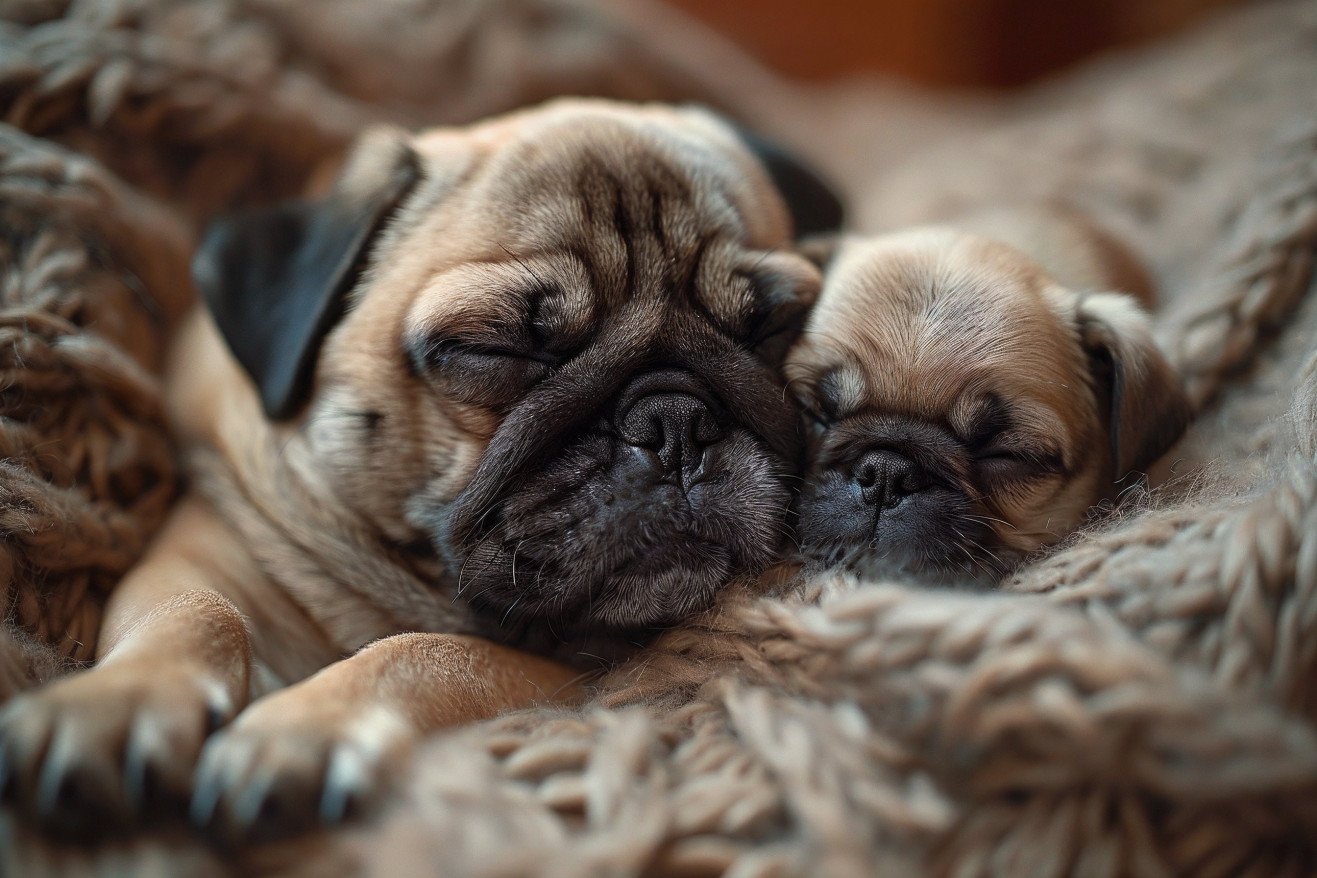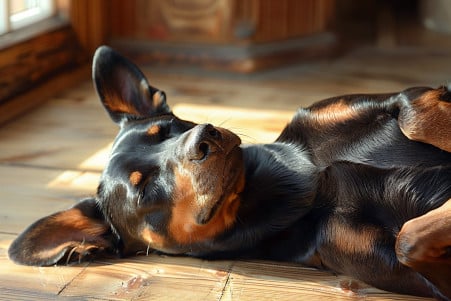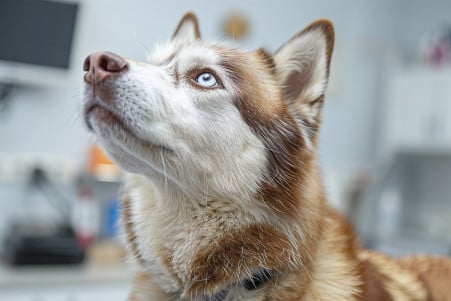Puppy Umbilical Cords: What New Dog Owners Should Know
4 May 2024 • Updated 4 May 2024

If you're a new dog owner, you may be wondering if puppies have umbilical cords like human babies and, if so, what you need to know about taking care of a puppy's belly button. Like humans, dogs have umbilical cords that attach them to the placenta in the womb. The umbilical cord is clamped and cut after birth, leaving a small umbilical stump that typically dries up and falls off within 1-2 weeks.
To better understand the biological function and postnatal care implications, we'll look at veterinary research on the dog whelping process. This research covers the umbilical cord's prenatal development, its function during whelping, and how to care for the puppy's umbilical region after birth. Knowing this information will help ensure a successful start for the new puppies in those important first days.
Do dogs have umbilical cords?
Anatomy and Histology of the Dog Umbilical Cord
The umbilical cord in dogs is made up of two arteries and one vein that connect the developing puppy to the placenta during pregnancy. These blood vessels are responsible for carrying nutrients, oxygen, and waste products between the mother and the developing fetus. While the umbilical cord in dogs and humans has the same basic function, there are some important differences in its structure.
Comparative studies have shown that the dog umbilical cord is more diffuse and flat and contains more blood vessels that branch out than the umbilical cord in humans, which has one vein and two arteries. The blood vessels themselves are made up of three layers - the intima, media, and adventitia - and are surrounded by a protective substance called Wharton's jelly.
While there are differences between species, the proper development of the umbilical cord is important for the health of the developing puppy, and any issues with the umbilical cord can lead to problems during pregnancy and birth. Therefore, it's important to understand the anatomy of the umbilical cord in dogs so that it can do its job of supporting the developing fetus during pregnancy.
Umbilical Cord Care and Healing in Newborn Puppies
The mother dog will chew through the umbilical cord after the puppy is born, but this will leave a small stump on the puppy's belly. Per Revival Animal Health, it's important to make sure that the mother doesn't over-clean the stump, as this can lead to complications. These complications include infection, hernias, and other issues. Veterinarians recommend that the stump be treated with an iodine solution to help dry it out and heal.
That said, the mother's over-cleaning can also lead to problems, so in some cases, it may be best to use an umbilical clamp. The Bethel Community Pet Hospital notes that if the intestines are coming out of the open umbilicus, the puppy needs to be taken to the vet immediately so that the area can be sutured closed.
It's important to make sure that the cord dries and falls off on its own, as Dr. Emmanuel Fontaine says that the umbilical cord can act as a highway for bacteria to enter the puppy's belly, which can lead to a number of health problems. Making sure that the umbilical cord is properly managed in the first few days is important for the overall health of newborn puppies.
Differences and Similarities Between Puppy and Human Umbilical Cords
Although they both have the same basic purpose, there are some key anatomical differences between human and dog umbilical cords. Comparative research has shown that umbilical cords in dogs are more diffuse and flat with a lot of blood vessels that branch off, while human umbilical cords have a single vein and arteries.
That said, both dogs and humans have been shown to benefit from delayed cord clamping after birth, which allows for the continued transfer of blood from the placenta to the newborn and has been shown to improve vitality scores. One study published in the PMC even showed that after the placenta was removed from the uterus, leaving the umbilical cord in place allowed for the continued transfer of blood to dog newborns, which led to higher Apgar and reflex scores.
In dogs, the shorter length of the umbilical cord and the fact that there are multiple puppies in a litter can make delayed clamping more difficult. However, despite these challenges, the PMC notes that research on umbilical cord stem cells in dogs and humans is an area where veterinary and human medicine are collaborating, with researchers in the field working to develop new technologies that can help both species.
Although human and canine umbilical cords have some structural differences, the fact that both species benefit from delayed cord clamping shows that research in veterinary and human medicine is closely connected.
Watch for Signs of Umbilical Abnormalities and Developmental Delays
During the first few weeks of life, it’s important to watch for signs of umbilical-related developmental delays. Vet Help Direct notes that umbilical hernias, which occur when the abdominal muscles fail to close and the intestines push through the navel area, are a common umbilical abnormality.
While small hernias may heal on their own or be repaired during spaying or neutering, larger hernias need to be surgically repaired. Other umbilical abnormalities include omphalophlebitis (inflammation of the umbilical vein) and incomplete detachment and healing of the cord, as Dr. Emmanuel Fontaine points out.
Frequent vet visits during the first few weeks of life will help ensure that any umbilical abnormalities are caught and treated early. This is also a time when close observation is important to help ensure a successful transition from the womb to the outside world.
Conclusion: The Importance of Proper Umbilical Care for Puppies
Although a puppy's umbilical cord and the resulting belly button may seem like a small detail, proper care is essential for their health and well-being. Making sure the cord dries and falls off properly is important for preventing potentially life-threatening issues like hernias and infections. Regular monitoring and veterinary checkups in the first few weeks of life are important for catching any potential umbilical issues early.
Understanding the anatomy, function, and postnatal care needs of a puppy's umbilicus is important for ensuring a smooth transition to life outside the womb. Although a dog's navel may be less noticeable than a human's, it's still an important reminder of their placental mammal heritage and their journey from conception to birth.


